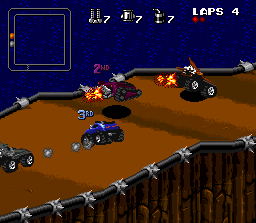Mario Kart is a series of kart racing games and a spin-off Mario franchise developed and published by Nintendo. Players compete in go-kart races while using various power-up items. It features characters and courses mostly from the Mario series as well as other gaming franchises such as The Legend of Zelda, Animal Crossing, F-Zero, Excitebike, and Splatoon.

Super Mario Kart is a kart racing game developed and published by Nintendo for the Super Nintendo Entertainment System (SNES). The first game in the Mario Kart series, it was released in Japan and North America in 1992, and in Europe the following year in 1993. Selling 8.76 million copies worldwide, the game went on to become the fourth best-selling SNES game of all time. Super Mario Kart was re-released on the Wii's Virtual Console in 2009, on the Wii U's Virtual Console in 2013, and on the New Nintendo 3DS's Virtual Console in 2016. Nintendo re-released Super Mario Kart in 2017 as part of the company's Super NES Classic Edition.
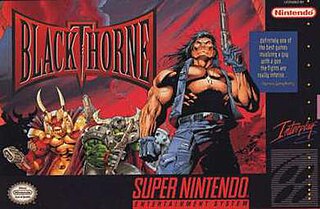
Blackthorne is a cinematic platform game developed by Blizzard Entertainment. It was released for the Super NES and MS-DOS in 1994. The cover art for the SNES version was drawn by Jim Lee. The following year, Blackthorne was released for the Sega 32X with additional content. In 2013, Blizzard released the game for free on their Battle.net PC client. In celebration of the company's 30th anniversary, Blackthorne was re-released for Nintendo Switch, PlayStation 4, Windows, and Xbox One as part of the Blizzard Arcade Collection in February 2021.
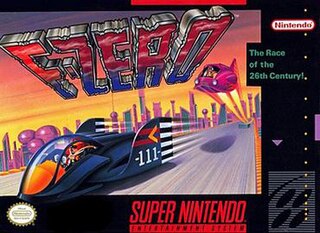
F-Zero is a racing game developed and published by Nintendo for the Super Nintendo Entertainment System (SNES). It was released in Japan on November 21, 1990, in North America in August 1991, and in Europe in 1992. F-Zero is the first game in the F-Zero series and was a launch game for the SNES. F-Zero was rereleased for the Virtual Console service on various Nintendo platforms and as part of the Super NES Classic Edition in 2017.

F-Zero GX is a 2003 racing video game developed by Amusement Vision and published by Nintendo for the GameCube console. It runs on an enhanced version of the engine used in Super Monkey Ball. F-Zero AX, the arcade counterpart of GX, uses the Triforce arcade system board conceived from a business alliance between Nintendo, Namco and Sega. Published by Sega, it was released alongside GX in 2003.
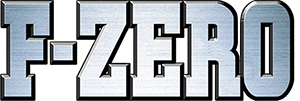
F-Zero is a series of futuristic racing games published by Nintendo, developed by Nintendo EAD and other third-party companies. The first game was released for the Super Famicom in Japan in 1990. Its success prompted Nintendo to create sequels on subsequent consoles.

Midnight Club: Street Racing is a 2000 racing video game developed by Angel Studios and published by Rockstar Games. The game focuses on competitive street racing and the import scene. The game was released for the PlayStation 2 and Game Boy Advance platforms, the former being a launch title for the platform. It is the first game in Midnight Club franchise, followed by Midnight Club II.

Crash Nitro Kart is a 2003 kart racing game for the PlayStation 2, Xbox, GameCube, and Game Boy Advance; versions for the N-Gage and mobile phones were released in 2004. It is the second racing game in the Crash Bandicoot series after Crash Team Racing and the first game in the series to feature full motion videos.

G.I. Joe: A Real American Hero is a 1991 run and gun game published by Taxan for the Nintendo Entertainment System based on the toyline of the same name. The game was produced by Ken Lobb and developed by the same Japanese team that later formed KID. A sequel developed by the same team, titled G.I. Joe: The Atlantis Factor, was released the following year, but was published by Capcom after Taxan went out of business.
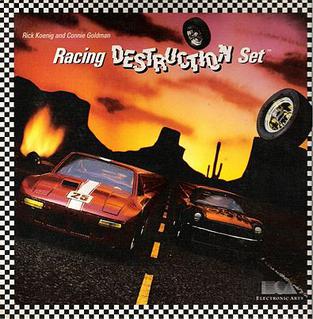
Racing Destruction Set is a racing video game published in 1985 for the Commodore 64 by Electronic Arts. It was advertised as being Commodore 128 compatible. A version for the Atari 8-bit family, programmed by Rebecca Heineman of Interplay, was released in 1986 in the United States, United Kingdom, and Germany. The game allows players to design and race on tracks with a variety of vehicles. It is part of the Construction Set series along with Pinball Construction Set, Music Construction Set, and Adventure Construction Set.

Super Ghouls 'n Ghosts, known as Chou Makaimura in Japan, is a platform video game developed and published by Capcom for the Super Nintendo Entertainment System in 1991. As the third game in the Ghosts 'n Goblins series and the first not to be released for the arcade, it again depicts knight Arthur saving Princess Guinevere and the kingdom from Emperor Sardius, who has cast a spell that has revived the Ghoul Realm.

Side Pocket is a pocket billiards simulation released as an arcade video game by Data East in 1986. It was ported to the Nintendo Entertainment System and Game Boy, while an enhanced remake was later released on the Sega Genesis, Super Nintendo Entertainment System, and Game Gear. The game spawned two sequels, as well as arcade spin-off series titled Pocket Gal.

Ford Racing 3 is a racing video game published by Empire Interactive, 2K, and ZOO Digital. It is the third game in the Ford Racing series, and was released in Europe in October 2004, for Microsoft Windows, PlayStation 2 and Xbox. In the United States, the game was released on the same platforms the following year, followed by releases later that year for the Game Boy Advance and Nintendo DS. Visual Impact Productions developed the GBA and DS versions, while Razorworks developed the other versions. The game received mixed reviews, critics were divided in its soundtrack, physics and overall content and gameplay.
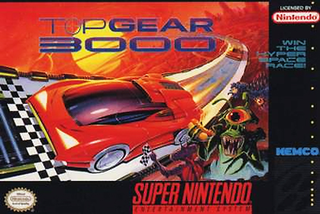
Top Gear 3000, later released in Japan as The Planet's Champ: TG3000, is a racing video game developed by Gremlin Interactive and published by Kemco for the Super Nintendo Entertainment System. It is the third game in the original Top Gear trilogy, and the last in the series to be developed by Gremlin. 3000 heavily resembles the previous Top Gear 2, but is set in the distant future.

Cruis'n is a series of racing video games originally developed by Eugene Jarvis for Midway Games and published by Midway and Nintendo. The series distinguishes itself from other racing games with its over-the-top presentation and fast-paced gameplay, featuring a wide variety of vehicles and tracks based on a variety of real world locations. The series debuted in North American and European arcades in 1994 with the release of Cruis'n USA, which, along with Killer Instinct, was advertised as running on Nintendo's Ultra 64 hardware. Two sequels followed, Cruis'n World and Cruis'n Exotica, which featured new vehicles and tracks. All three games were released for the Nintendo 64 as well, with Exotica also being released for the handheld Game Boy Color. The next game in the series, Cruis'n Velocity deviated from the traditional arcade gameplay of the series and was released for the Game Boy Advance.

RPM Racing is a Super Nintendo Entertainment System racing game developed by Silicon & Synapse and published by Interplay Productions.

Need for Speed: Nitro is a racing video game and the fourteenth title of the Need for Speed series. It was published by Electronic Arts for the Wii and Nintendo DS platforms. It is also one of only two games in the franchise to date to not be made for PC and the only game of the franchise to be released only for Nintendo consoles. It was announced in January as part of a three-game announcement that includes Need for Speed: Shift and Need for Speed: World. The game was developed by EA Montreal who have previous experience with Nintendo titles, although the DS version was developed separately by Firebrand Games' Florida studio. An improved version of the DS edition of the game, Need for Speed: Nitro-X, was released for DSiWare on November 26, 2010.
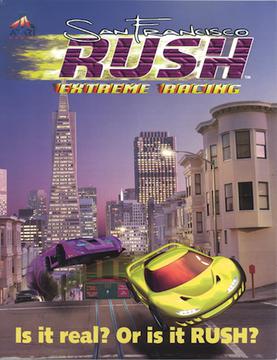
San Francisco Rush: Extreme Racing is a video game developed and published by Atari Games. This game was first released in arcades in 1996 and was ported to Nintendo 64 in 1997 and the PlayStation in 1998. San Francisco Rush: Extreme Racing is the first game in the Rush series.
Asphalt is a series of racing video games developed and published by Gameloft. Games in the series typically focus on fast-paced arcade racing set in various locales throughout the world, tasking players to complete races while evading the local law enforcement in police pursuits.

The Lost Vikings is a puzzle-platform game developed by Silicon & Synapse and published by Interplay. It was originally released for the Super NES in 1993, then subsequently released for the Amiga, Amiga CD32, MS-DOS, and Mega Drive/Genesis systems; the Mega Drive/Genesis version contains five stages not present in any other version of the game, and can also be played by three players simultaneously. Blizzard re-released the game for the Game Boy Advance in 2003. In 2014, the game was added to Battle.net as a free download emulated through DOSBox. In celebration of the company's 30th anniversary, The Lost Vikings was re-released for Microsoft Windows, Nintendo Switch, PlayStation 4 and Xbox One as part of the Blizzard Arcade Collection in February 2021.

